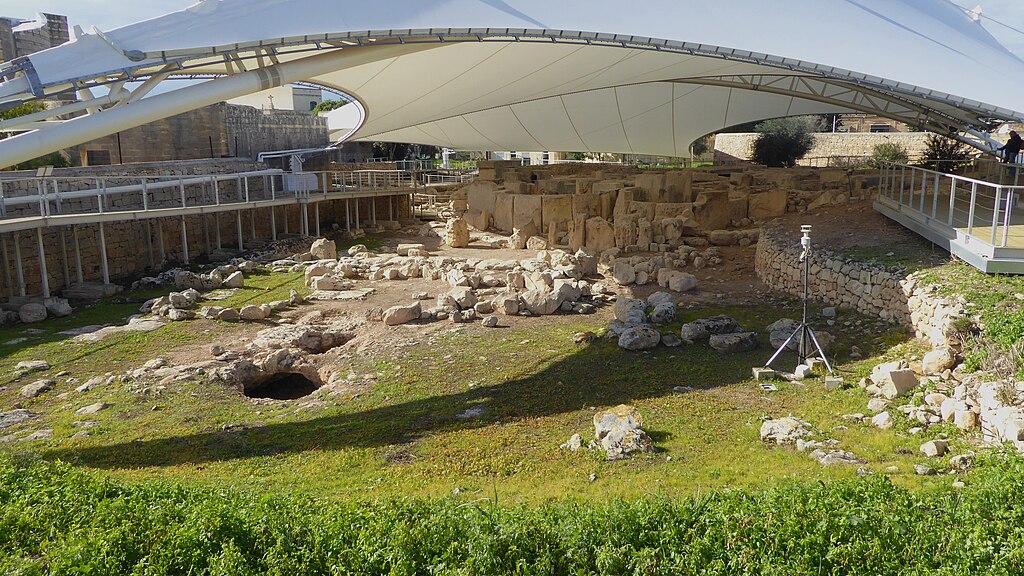Tarxien Temples
Historic Building in Birgu

The Tarxien Temples, part of Malta's remarkable collection of Megalithic Temples, form one of the island's most fascinating prehistoric sites. Dating back to around 3400–2800 BC, this complex is located in the town of Tarxien, within the island's central region. Recognized as a UNESCO World Heritage Site since 1992, the Tarxien Temples represent the pinnacle of Malta's Neolithic craftsmanship and spirituality. The site comprises four interconnected temple structures, the most elaborately decorated of all Malta's ancient monuments. These temples display incredible architectural skill — massive limestone slabs arranged to create multi-chambered sanctuaries, intricate carvings, and carefully aligned altars that hint at the ritual and ceremonial practices of an advanced prehistoric society.
Visitors to the Tarxien complex are greeted by beautifully preserved stonework, including carved reliefs of bulls, pigs, and spiral motifs, symbols believed to represent fertility, life cycles, and sacred worship. Among the site's most famous discoveries are altars and stone screens, as well as a monumental fragment of a colossal statue — the largest human representation ever found in the Maltese islands. One of the chambers even features carvings of a bull and a sow, showcasing both artistic skill and symbolic meaning. To protect these fragile remains, many of the most detailed decorated slabs have been relocated to the National Museum of Archaeology in Valletta, while the original site retains an evocative sense of mystery and reverence.
The story of the site's discovery is as fascinating as the temples themselves. In 1913, a local farmer named Lorenzo Despott reported encountering large stone blocks while plowing his field. His discovery attracted the attention of Sir Themistocles Zammit, then Director of the National Museum, who began excavations in 1915. Over the next four years, Zammit uncovered four distinct temple structures, transforming Malta's understanding of its prehistoric past. His methodical approach marked the beginning of modern archaeological practice in Malta and helped foster a growing sense of national identity rooted in the island's ancient heritage.
Today, the Tarxien Temples remain one of the island's most visited prehistoric attractions, thanks to their accessibility and preservation. Protective tent-like shelters, similar to those covering Ħaġar Qim and Mnajdra, were installed in 2015 to safeguard the delicate limestone from the elements. Visitors can now walk among the ancient stones, exploring a site that reveals not just the ingenuity of its builders but also the enduring legacy of Malta's Neolithic civilization. The Tarxien Temples are more than just ruins — they are a window into a 5,000-year-old culture that continues to captivate all who set foot on this small yet monumental island.
The Tarxien Temples appears in our Complete Guide to Visiting Birgu!
This website uses affiliate links which may earn a commission at no additional cost to you!
Visiting Tarxien Temples
Daily 9:00 a.m. – 5:00 p.m. (last entry 4:30 p.m.)
Adults €6
Nearby Attractions
- Notre Dame Gate (2.0) km
City Gate in Birgu - Couvre Porte (Covered Gate) (2.0) km
Historic Building and Museum in Birgu - Gate of Provence (2.1) km
City Gate in Birgu - St. John Bastion and the Advanced Gate (2.1) km
City Gate in Birgu - St. Lawrence’s Church (2.2) km
Church in Birgu - Malta Maritime Museum (2.2) km
Museum in Birgu - Inquisitor’s Palace, Birgu (2.2) km
Historic Building in Birgu - Armoury of the Knights of Malta (2.3) km
Historic Building in Birgu - Auberge d’Angleterre, Birgu (2.3) km
Historic Building in Birgu - Auberge d'Auvergne et Provence, Birgu (2.4) km
Historic Building in Birgu


